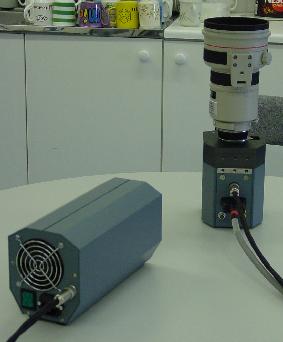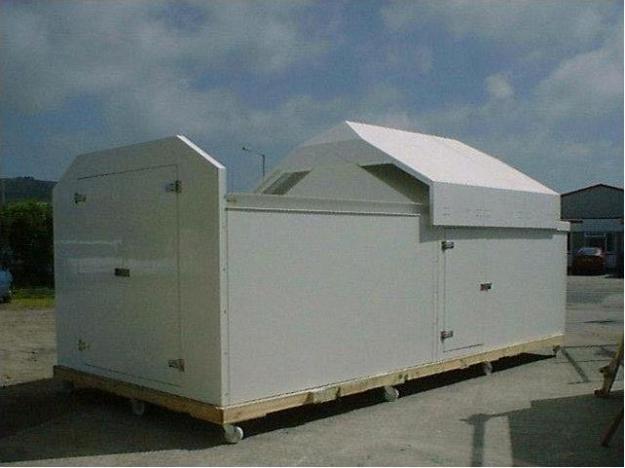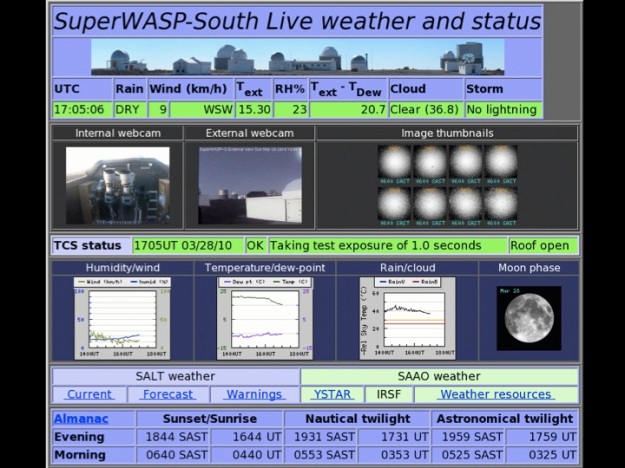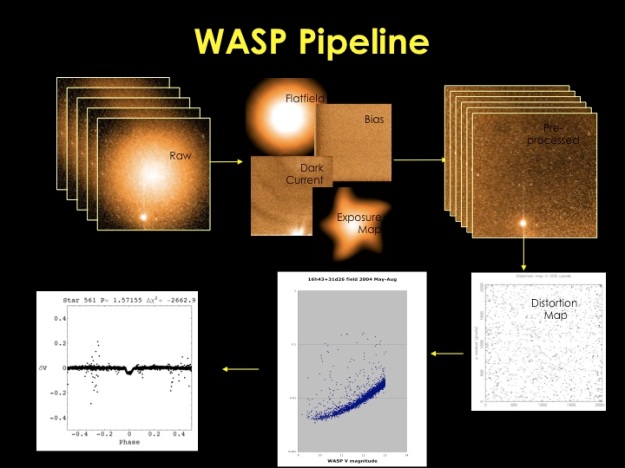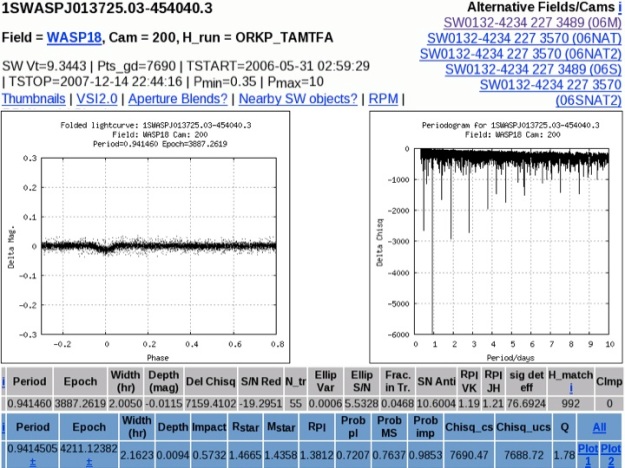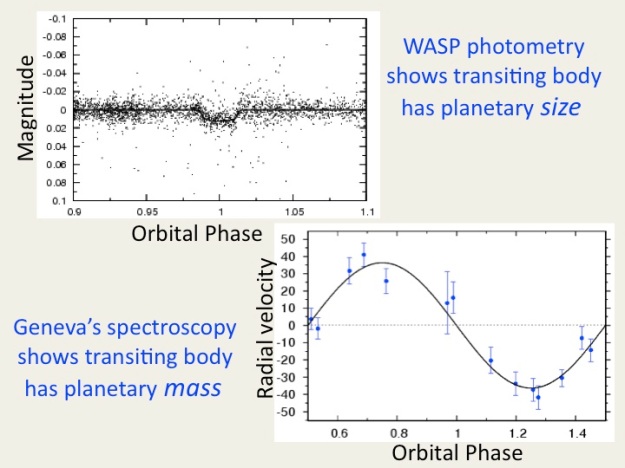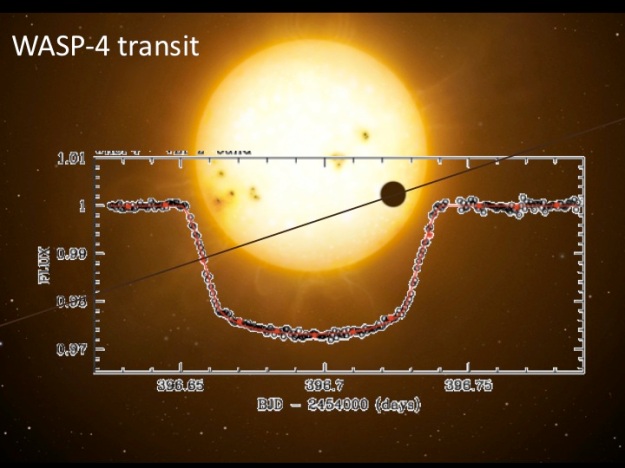The Mounts
| Make: | Torus fork mount | Weight: | 400 Kg |
| Pointing error: | 30 arcsec RMS full sky | Tracking error: | < 0.01 arcsec per second |
| Controls: | Stepper motors driven by Torus motion control electronics | Time Standard: | GPS receiver gives better than 1s synchronisation with UTC |
The Cameras
| Lens: | Canon 200mm f/1.8 | Aperture: | 11.1 cm |
| CCD: | 2048 x 2048 thinned e2v by Andor of Belfast | Pixel size: | 13.5 micrometers |
| Readout noise: | 12-18 e- (in 1MHz pixel readout speed) | Gain settings: | 2, 1.4, 0.7 e-/ADU |
| Maximum pixel count: | 80,000 e- | Field of View: | 7.8 x 7.8 degrees |
| Plate Scale | 13.7 arcsec/pixel | Operating Temperature: | -50 degree C |
| Cooling Mechanism | 3-stage Peltier |
The Enclosures
| Maker: | GRPro engineering | Construction: | reinforced fibreglass |
| Size: | 3.5m x 8.5m | Design: | Camera room; computer room; retractable roof |
The WASP cameras are operating robotically from the UK, and can be commanded over the internet. The observers web-page monitors the weather, the instrument status, and the incoming data.
The WASP cameras cover 1% of the night sky in each shot. They usually tile a set of fields, returning to each every 8 minutes. Approximately 7000 CCD images are taken on each clear night, amounting to 40 GBs of data. These are pipeline processed into photometric datapoints on each star, which are accumulated into lightcurves in the WASP archive.
Search algorithms look for transits in each lightcurve of each star, producing a “candidate page” for each possible transit. A human looks at these to select the best planet candidates.
The candidates are sent for radial-velocity observations, using telescopes such as the 1.2-m Swiss/Euler telescope at La Silla Observatory, equipped with the CORALIE spectrograph. The size of the radial-velocity motion tells us the mass of the orbiting body and thus tells us whether it is a planet.
We also obtain the best-quality light-curves that we can, in order to best parametrise the planets.


